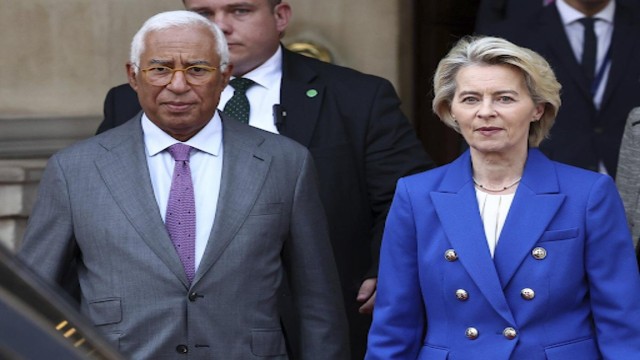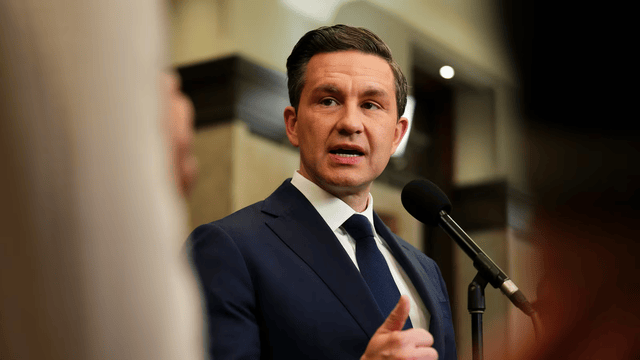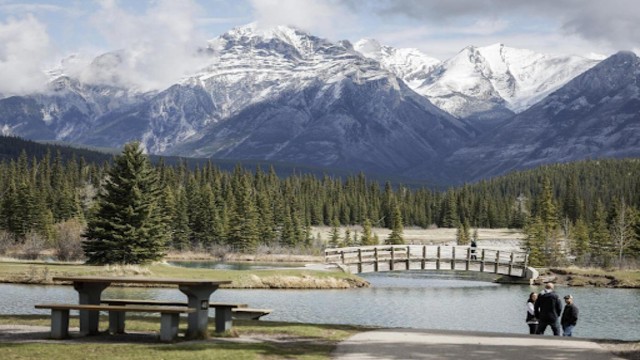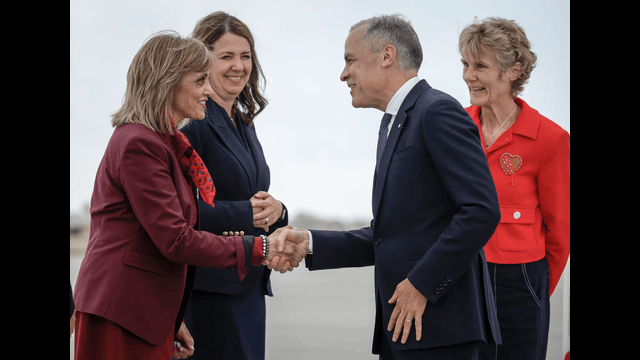
Wild caribou roam the tundra near The Meadowbank Gold Mine located in the Nunavut on March 25, 2009. A major provincial park expansion is set to create a protection zone of almost 2,000 square kilometres for caribou and other species in northeastern British Columbia. THE CANADIAN PRESS/Nathan Denette
VICTORIA - Friday marked a significant milestone in the recovery of the caribou population in northeastern British Columbia, as the province announced a major expansion of Klinse-za Park to aid in wildlife preservation.
The B.C. Ministry of Environment revealed that Klinse-za Park, situated west of Chetwynd, about 1,100 kilometers north of Vancouver, will increase to nearly 2,000 square kilometers. This expansion, from its original 27 square kilometers established in 2001, will make it the largest provincial park created in B.C. in a decade.
Clayton Lamb, a scientist with Biodiversity Pathways, emphasized the importance of large, intact landscapes for caribou, stating that disturbed or degraded habitats disrupt the predator-prey balance crucial for caribou survival.
The park's expansion stems from a 2020 partnership between the province and the Saulteau and West Moberly First Nations, aimed at stabilizing and protecting the endangered southern mountain caribou. These First Nations have collaborated on caribou recovery since 2013 through the Nikanese Wah tzee Stewardship Society, during a time when only 38 caribou remained in the area.
Over the past century, B.C.’s caribou population has declined by more than 55%, primarily due to human-caused habitat disruption, leaving fewer than 4,000 southern mountain caribou. Saulteau First Nations Chief Rudy Paquette highlighted the park expansion as evidence of Indigenous efforts in caribou restoration, emphasizing its role in protecting sacred lands, fostering healthy ecosystems, and supporting diverse economies.
Rachel Plotkin of the David Suzuki Foundation welcomed the expansion, noting that northeastern B.C.'s industrial activities have severely impacted caribou habitats. These activities often create pathways that predators use to access caribou territory, leading to significant population declines. Plotkin explained that human-created paths, like seismic lines and logging roads, increase predators' hunting success rates.
Lamb, also the project scientist for the Nikanese Wah tzee Stewardship Society, described efforts to protect pregnant caribou from predators over the past decade as "probably Canada's greatest conservation challenge." He stressed the necessity of habitat restoration for achieving self-sustaining caribou populations. Lamb expressed cautious optimism, crediting the collaborative efforts and increased protection for shifting the outlook on caribou recovery positively.
In addition to expanding Klinse-za Park, the federal government allocated $46 million to compensate industries and tenure holders affected by the change, along with another $10 million to enhance local economic diversification.
The expanded park will also protect other at-risk species, including fishers, bull trout, grizzlies, and wolverines, as well as safeguard sacred cultural sites for Treaty 8 First Nations. West Moberly First Nations Chief Roland Willson remarked on the changing impact on the land, highlighting the difference between traditional Indigenous practices and modern industrial footprints.
This park expansion is part of B.C.'s broader commitment to protect 30% of the province's land by 2030.















